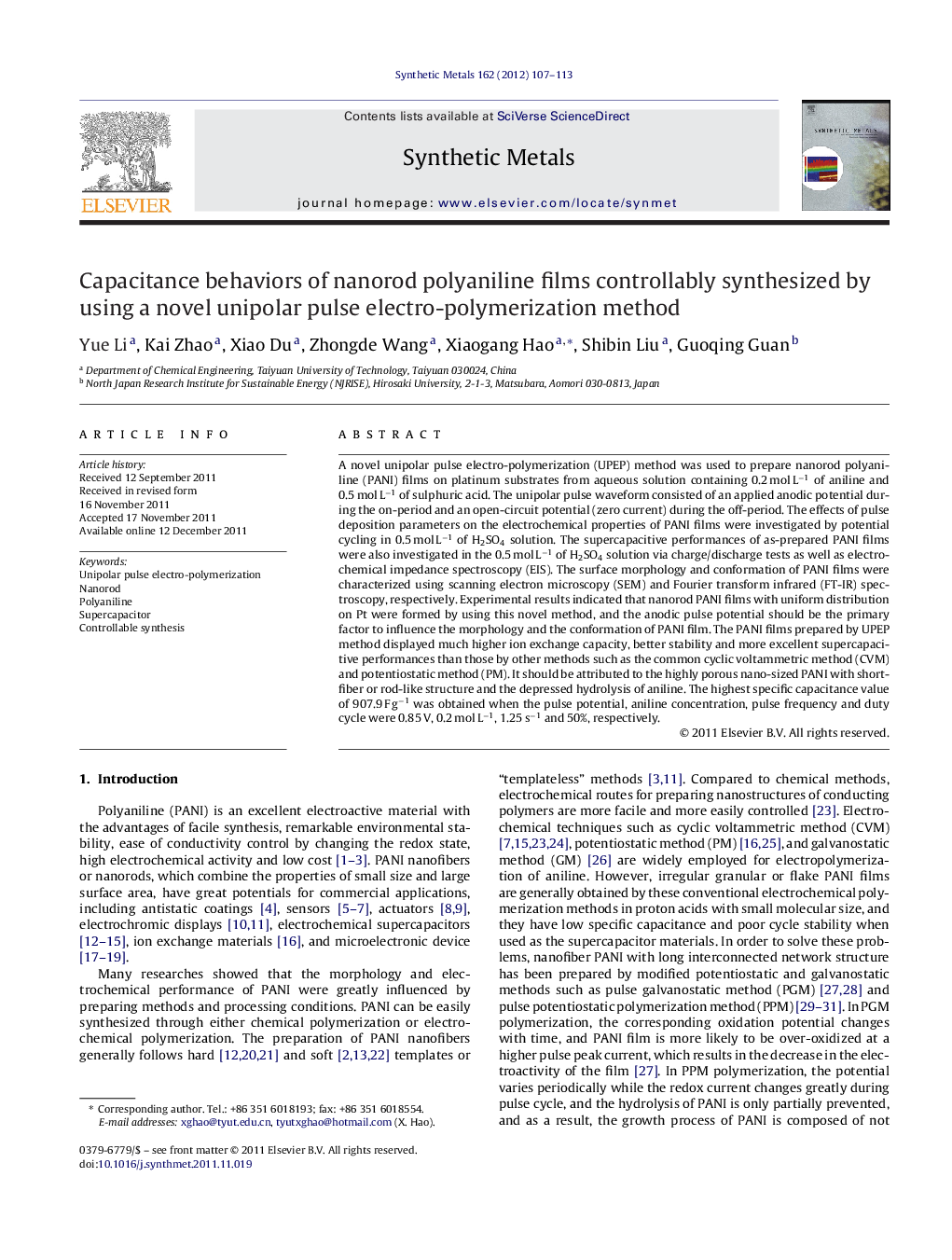| Article ID | Journal | Published Year | Pages | File Type |
|---|---|---|---|---|
| 1442158 | Synthetic Metals | 2012 | 7 Pages |
A novel unipolar pulse electro-polymerization (UPEP) method was used to prepare nanorod polyaniline (PANI) films on platinum substrates from aqueous solution containing 0.2 mol L−1 of aniline and 0.5 mol L−1 of sulphuric acid. The unipolar pulse waveform consisted of an applied anodic potential during the on-period and an open-circuit potential (zero current) during the off-period. The effects of pulse deposition parameters on the electrochemical properties of PANI films were investigated by potential cycling in 0.5 mol L−1 of H2SO4 solution. The supercapacitive performances of as-prepared PANI films were also investigated in the 0.5 mol L−1 of H2SO4 solution via charge/discharge tests as well as electrochemical impedance spectroscopy (EIS). The surface morphology and conformation of PANI films were characterized using scanning electron microscopy (SEM) and Fourier transform infrared (FT-IR) spectroscopy, respectively. Experimental results indicated that nanorod PANI films with uniform distribution on Pt were formed by using this novel method, and the anodic pulse potential should be the primary factor to influence the morphology and the conformation of PANI film. The PANI films prepared by UPEP method displayed much higher ion exchange capacity, better stability and more excellent supercapacitive performances than those by other methods such as the common cyclic voltammetric method (CVM) and potentiostatic method (PM). It should be attributed to the highly porous nano-sized PANI with short-fiber or rod-like structure and the depressed hydrolysis of aniline. The highest specific capacitance value of 907.9 F g−1 was obtained when the pulse potential, aniline concentration, pulse frequency and duty cycle were 0.85 V, 0.2 mol L−1, 1.25 s−1 and 50%, respectively.
► A novel UPEP method was reported to prepare the nanorod PANI thin films. ► The morphology and conformation of nanorod PANI can be controlled by UPEP. ► The synthesized PANI films have the ordered and short-nanofiber or nanorod structure.
